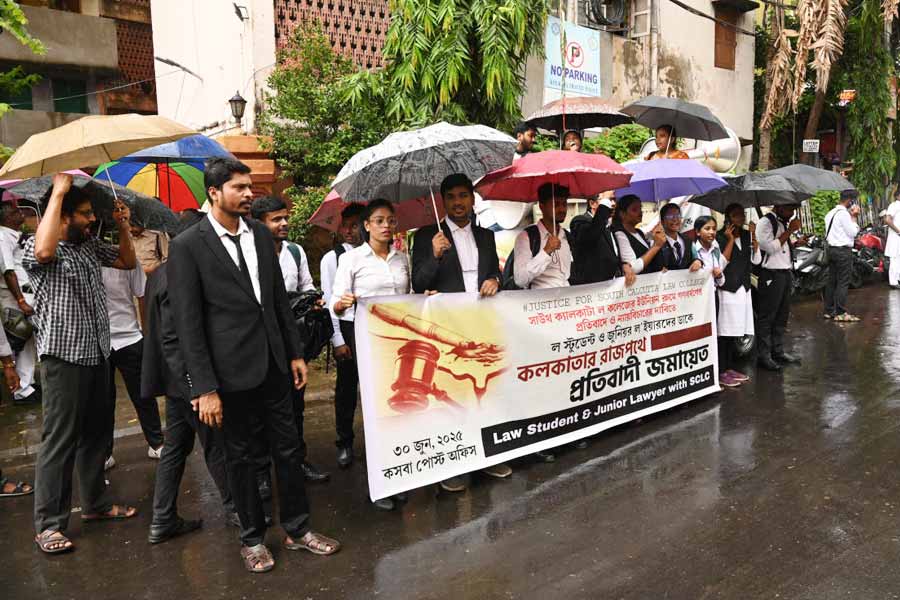 |
In my younger days if you were growing up in cosmopolitan central Calcutta, your parents would try hard to instil their own perception of culture into you. You might be learning vocal or instrumental classical music or Sindhi kafi or Rabindrasangeet, but you always listened in to a charming Sunday lunchtime programme on AIR called Musical Bandbox.
It had bubbly comperes like “B.K.”, requests of songs for family, friends or lovers and it kept you abreast of the latest in Western pop music: you just had to tune in, on the off chance there was a request for you, encoded of course. Most budding relationships then belonged with Doris Day’s Once I had a secret love....
Since Autumn Flush began I have become a sort of nostalgia specialist and friends have sent me collections of pop music from those days in the email: if my laptop doesn’t develop an intractable virus, I shall treasure these e-anthologies forever.
One of these has 100 top hits for each year for more than a century: 10,400 songs in English, Italian and Spanish. It is a goldmine of old favourites. I started from about five years after my birth and then went back up to World War I and then again forward by the decade.
The floor show number, Rum and Coca Cola, the poignant hit from the First World War Till we meet again, Bing Crosby’s Don’t fence me in, for instance. Wacky ones like The naughty lady of shady lane, who turns out to be nine days old.
Likewise ruthless rhymes for heartless homes like The railroad runs through the middle of the house... with enough sadistic comedy to enchant and horrify us as children. Many of us substituted Nanavati for Tom Dooley in the eponymous ballad as we followed that soap opera true story of murder and mayhem through the now extinct tabloid called Blitz. Those were days when a friendship could be cemented or destroyed, depending on whether you were a fan of Elvis or Pat Boone.
These songs were often our window to the world???, so we ignored politics and sang April in Portugal although Goa, Daman and Diu hadn’t been rescued from Salazar (even his name sounded like a threat) yet. I adored the sheer energy of Mambo Italiano through which we knew about enchiladas long ago.
So too Quantanamera or Que sera sera. My friend, the late Kamlesh Hingoraney, taught us the steps, so on one occasion 13 of us danced in a circle at a Park street restaurant to the theme song from Zorba the Greek.
The songs of the Sixties took me back to the heady days of Aldermarston marches, of protest against the war in Vietnam. Bob Dylan (picture above), Pete Seeger, Joan Baez were all there when we truly believed that peace was round the corner. Whatever happened to that world, our world?
Speaking of Pete Seeger, I have sung Puff, the magic dragon with all the children in my family. Some students recently broke my heart when they told me the song was not about forgetting a much-loved toy but about flower power and addiction to marijuana. Wikipedia tells me this theory has been repeatedly refuted by the lad who had written the original lyrics in Cornell, but it spoiled that number for me. Did Number fifty four, the house with the bamboo door offer more than just Espresso coffee? I wondered.
Starting in the Sixties too were the Beatles and the early Simon and Garfunkel.
If you think the writers of music in India are plagiarists, this anthology of 10,400 songs is a great eye-opener: so many songs we think of as English were wholesale borrowings from Italian and Spanish originals. A wacky number we knew as Stupid Cupid you’re a real mean guy... had an original Spanish/Italian version that went Estupido Cupido! I sense Mack the Knife and Speedy Gonzales belong to this species.
Here’s to the experience of many a decade of frivolous listening and songs that release magical memories. Would you exchange that for youth? I wouldn’t!
Shubha Vijaya! Do keep writing. I love your letters and try to incorporate the suggestions in later columns whenever I can.
The writer, a former professor of English at Jadavpur University, can be contacted at sajni.mukherji@gmail.com











